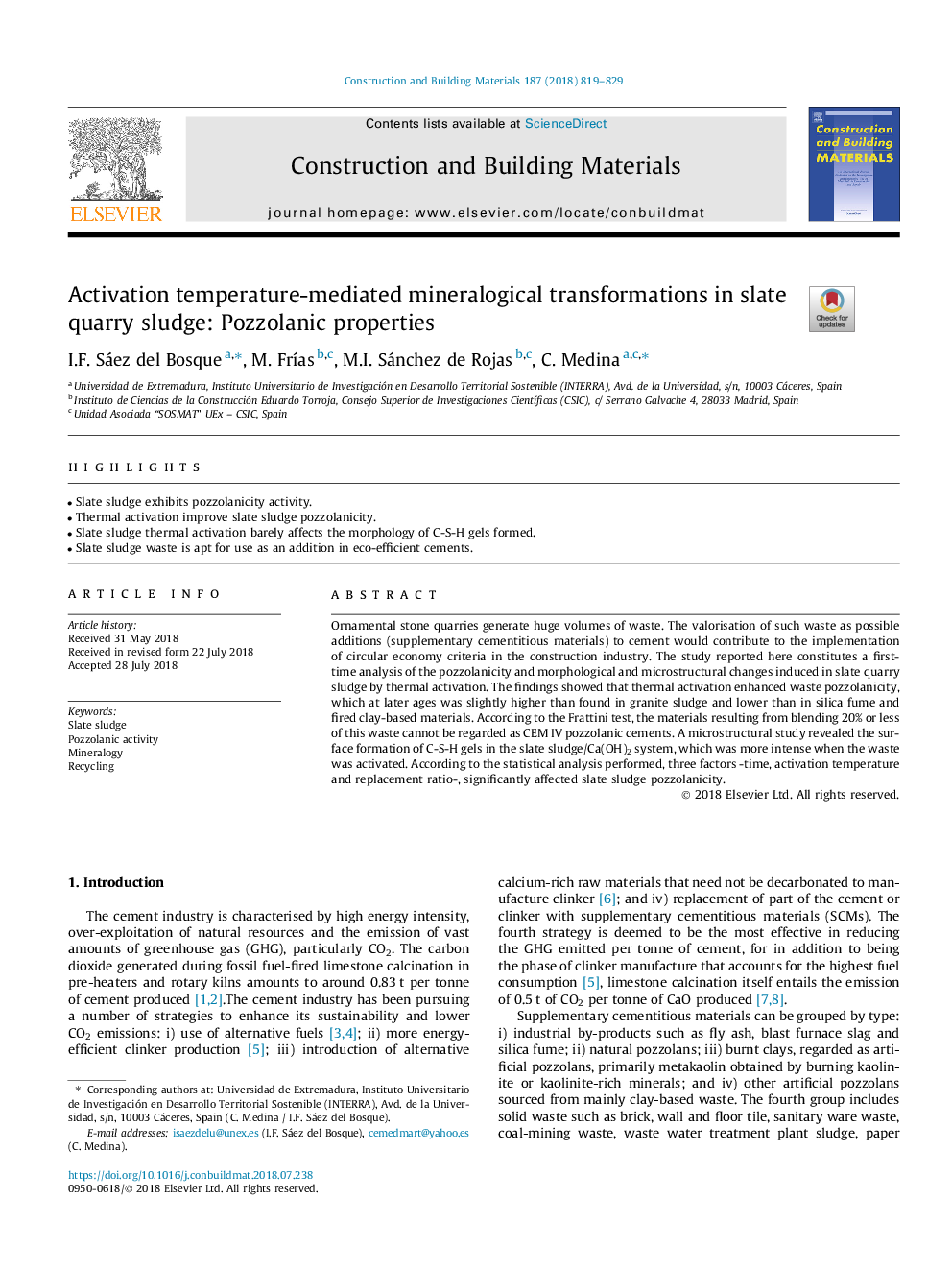| Article ID | Journal | Published Year | Pages | File Type |
|---|---|---|---|---|
| 6711533 | Construction and Building Materials | 2018 | 11 Pages |
Abstract
Ornamental stone quarries generate huge volumes of waste. The valorisation of such waste as possible additions (supplementary cementitious materials) to cement would contribute to the implementation of circular economy criteria in the construction industry. The study reported here constitutes a first-time analysis of the pozzolanicity and morphological and microstructural changes induced in slate quarry sludge by thermal activation. The findings showed that thermal activation enhanced waste pozzolanicity, which at later ages was slightly higher than found in granite sludge and lower than in silica fume and fired clay-based materials. According to the Frattini test, the materials resulting from blending 20% or less of this waste cannot be regarded as CEM IV pozzolanic cements. A microstructural study revealed the surface formation of C-S-H gels in the slate sludge/Ca(OH)2 system, which was more intense when the waste was activated. According to the statistical analysis performed, three factors -time, activation temperature and replacement ratio-, significantly affected slate sludge pozzolanicity.
Related Topics
Physical Sciences and Engineering
Engineering
Civil and Structural Engineering
Authors
I.F. Sáez del Bosque, M. FrÃas, M.I. Sánchez de Rojas, C. Medina,
